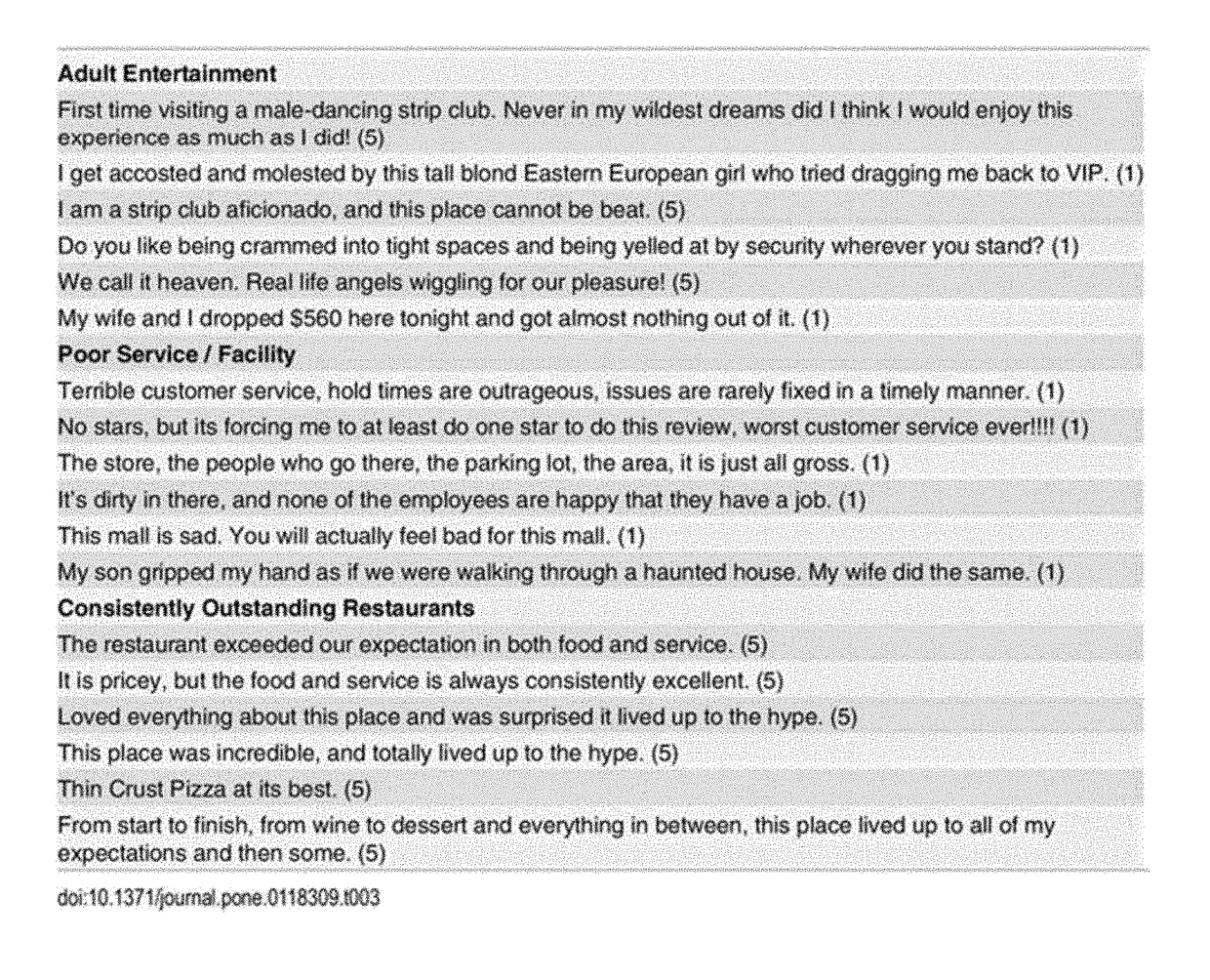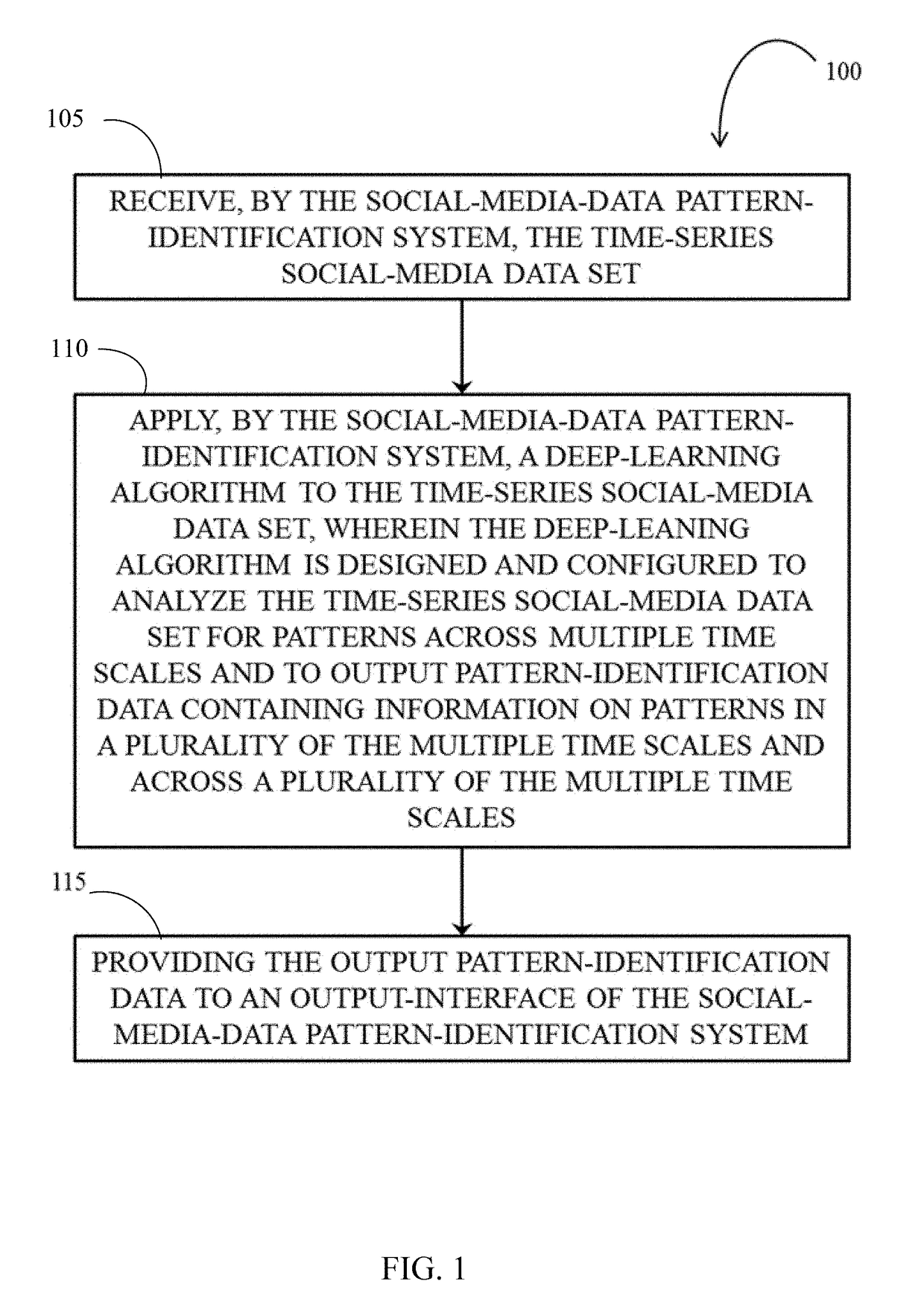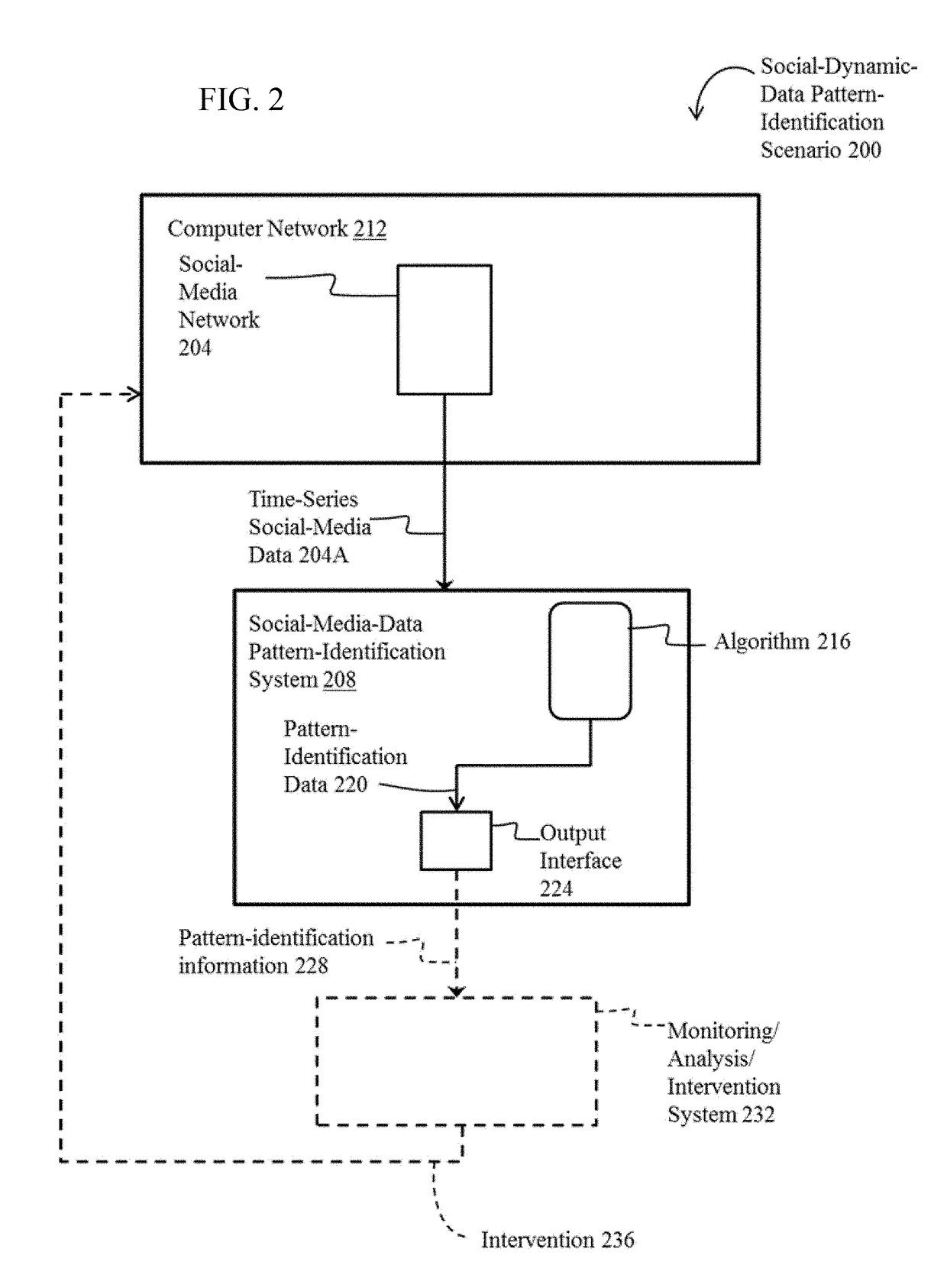Pattern Identification in Time-Series Social Media Data, and Output-Dynamics Engineering for a Dynamic System Having One or More Multi-Scale Time-Series Data Sets
a dynamic system and time-series data technology, applied in the field of computer-implemented time-series data analysis and datadriven engineering, can solve the problems of not developing a rigorous methodology for engineering the outcome dynamics of a social system, and it is generally difficult to use a predictive model alone to solve engineering tasks
- Summary
- Abstract
- Description
- Claims
- Application Information
AI Technical Summary
Benefits of technology
Problems solved by technology
Method used
Image
Examples
experiment 1
hing
[0177]In a first experiment, i.e., pattern matching, the observation Xi of every test sample was given and the aim was at matching a single Vref. This Vref is defined as the average outcome dynamics of the top 2% samples in the training set with the highest long-term popularity ∥V∥1. Dynamics engineering was conducted using all test samples and the resulting validity, cost, and mismatch were analyzed.
[0178]Validity (γ) vs. λ. In FIG. 27, the effect of different values of λ on the average solution validity γ is analyzed. The dotted horizontal lines marks γ=0, above which the solution is considered valid. Note that NN is not included here since it doesn't require the selection of λ. From the figure, the observations are twofold. First, there is indeed a range of λ that produces valid solutions. In particular, that range changes with the value of ρ: the lower ρ is, the larger the range is. This is because a lower ρ puts more emphasis on minimizing mismatch instead of cost (see Equa...
experiment 2
ization
[0186]In the second experiment, i.e., profit maximization, the observation Xi of every test sample was given, and the aim was at maximizing the long-term popularity (reward) ∥V∥1 with minimum cost ∥U∥1. Again, dynamics engineering was conducted using all test samples and the resulting validity, cost, and reward were analyzed.
[0187]Validity (γ) vs. λ. FIG. 31 presents the effects of different values of λ on the average solution validity γ, where the dotted horizontal lines marks γ=0 (above which the solution is considered valid). There are two observations in FIG. 31 that are consistent with FIG. 27. First, there is a range of λ that produces valid solutions; the lower ρ is, the easier to produce valid solutions. Since a lower ρ puts more emphasis on reward instead of cost (see Equation 20), it suggests that the key to produce good solutions is putting a low (numerical) weight on cost. Second, the current method outperforms the AR baseline in terms of validity, indicating that...
PUM
 Login to View More
Login to View More Abstract
Description
Claims
Application Information
 Login to View More
Login to View More - R&D
- Intellectual Property
- Life Sciences
- Materials
- Tech Scout
- Unparalleled Data Quality
- Higher Quality Content
- 60% Fewer Hallucinations
Browse by: Latest US Patents, China's latest patents, Technical Efficacy Thesaurus, Application Domain, Technology Topic, Popular Technical Reports.
© 2025 PatSnap. All rights reserved.Legal|Privacy policy|Modern Slavery Act Transparency Statement|Sitemap|About US| Contact US: help@patsnap.com



